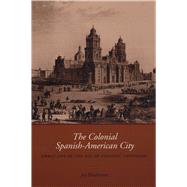The Colonial Spanish-American City
, by Kinsbruner, Jay- ISBN: 9780292706682 | 0292706685
- Cover: Paperback
- Copyright: 5/30/2005
"This book stands alone as a study of the Spanish-American city....It brings together material on the structure of Spanish colonial cities [and] society in the cities, with an especially useful discussion of occupations and family organizations....General readers will also find this an interesting book." --William H. Beezley, Professor of History, University of Arizona The colonial Spanish-American city, like its counterpart across the Atlantic, was an outgrowth of commercial enterprise. A center of entrepreneurial activity and wealth, it drew people seeking a better life, with more educational, occupational, commercial, bureaucratic, and marital possibilities than were available in the rural regions of the Spanish colonies. Indeed, the Spanish-American city represented hope and opportunity, although not for everyone. In this authoritative work, Jay Kinsbruner draws on many sources to offer the first history and interpretation in English of the colonial Spanish-American city. After an overview of pre-Columbian cities, he devotes chapters to many important aspects of the colonial city, including its governance and administrative structure, physical form, economy, and social and family life. Kinsbruner's overarching thesis is that the Spanish-American city evolved as a circumstance of trans-Atlantic capitalism. Underpinning this thesis is his view that there were no plebeians in the colonial city. He calls for a class interpretation, with an emphasis on the lower-middle class. His study also explores the active roles of women, many of them heads of households, in the colonial Spanish-American city.







